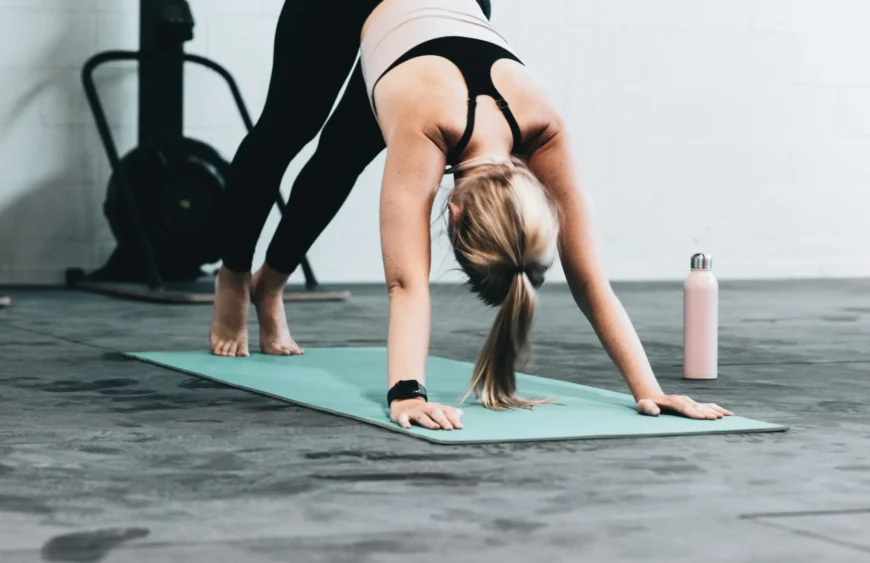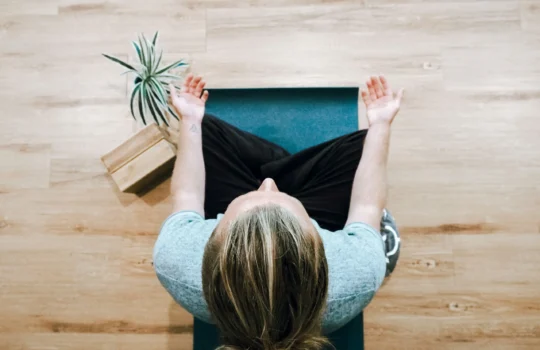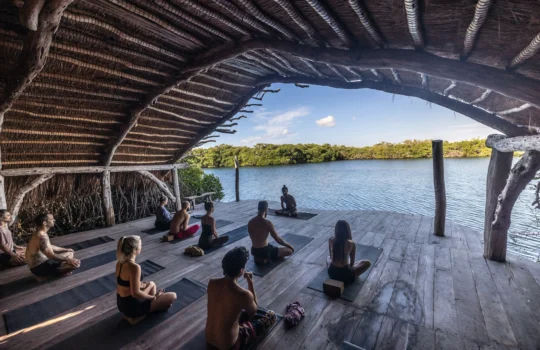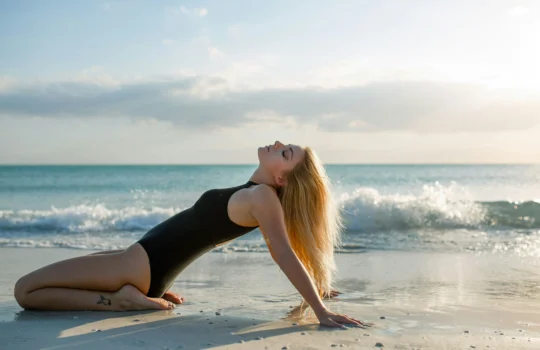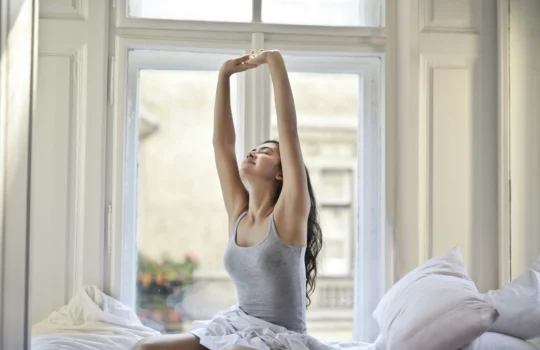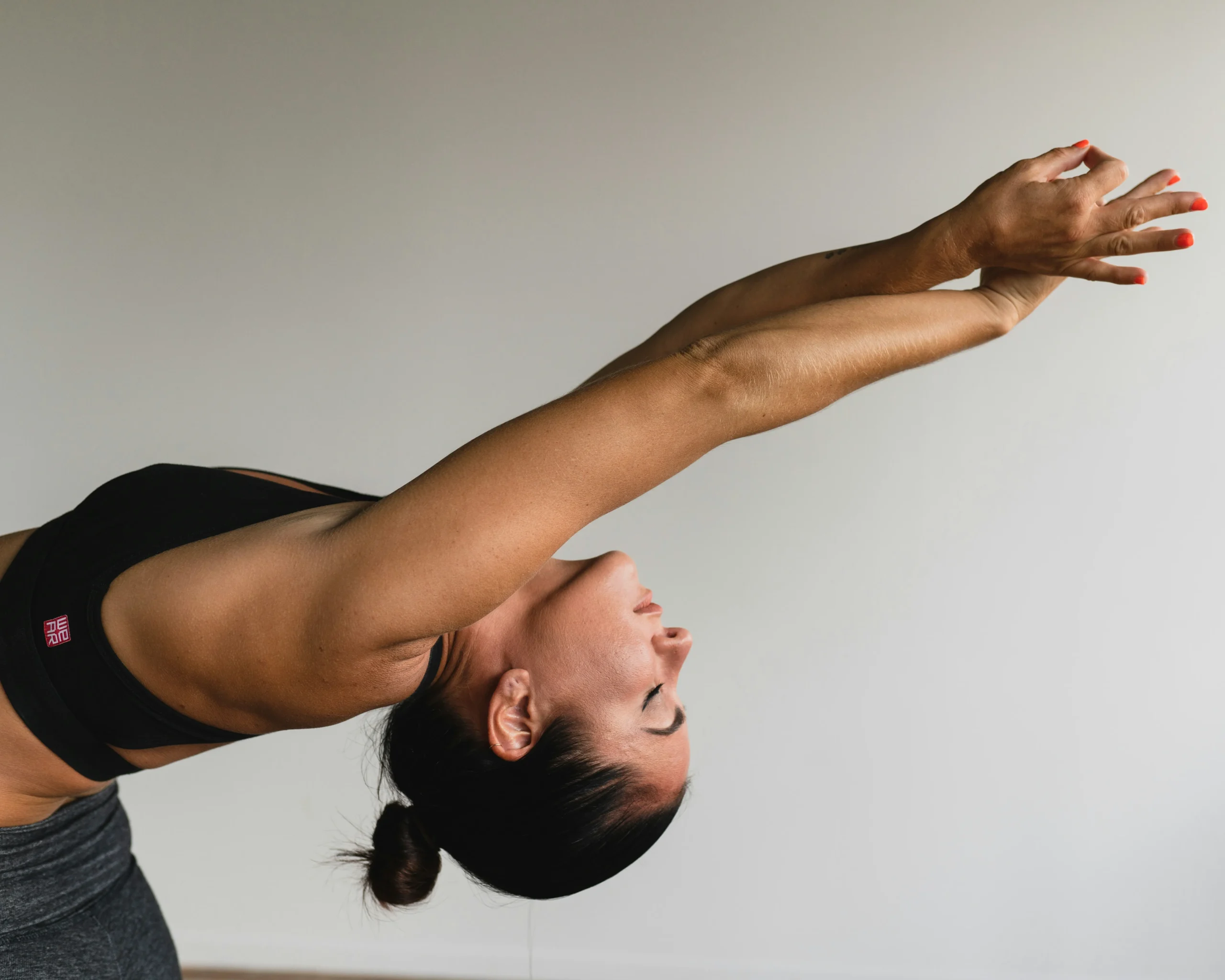Welcome to the world of yoga, a transformative practice that unites the body, mind, and spirit. Embarking on this journey from the comfort of your home offers a unique opportunity to explore your inner self at your own pace with beginner yoga poses.
Whether you’re looking to enhance physical flexibility, cultivate mental clarity, or find a moment of peace in your busy day, yoga at home can be your gateway to a more balanced life. In this guide, we’ll delve into the magic of yoga for beginners and reveal the most important beginner yoga pose you could try at home. So, roll out your mat, embrace the beginner’s mind, and let’s start this beautiful journey together.
Table of Contents
Why Start Yoga at Home?
The idea of starting yoga at home has never been more appealing. In a world where our living spaces have become our sanctuaries, learning yoga in this personal environment has numerous benefits. Here are just a few reasons why your home could be the perfect yoga studio:
- Personalized Pace: Without the pressure of keeping up with a class, you can take your time to learn and practice each pose, tuning into your body’s needs and limits.
- Flexibility: Yoga at home fits your schedule. Whether it’s a morning session to kickstart your day or a relaxing practice before bed, you decide when it’s yoga time.
- Comfort and Privacy: For many beginners, the thought of practicing in front of others can be daunting. At home, you have the privacy to explore new poses and build confidence without an audience.
- Cost-Effective: Save on gym memberships or studio fees. Your home practice requires minimal investment – just you, your mat, and the willingness to learn.
The Magic of Beginner Yoga Poses
Yoga is more than just physical exercise; it’s a holistic practice that nurtures your physical, mental, and emotional well-being. For beginners, the magic of yoga lies in its accessibility and its profound impact on health and happiness. Here’s what makes yoga so special for newcomers:
- Physical Health: Yoga strengthens and stretches the body, improving posture, flexibility, and overall fitness. It’s a gentle way to start being more active, suitable for all ages and fitness levels.
- Mental Clarity: Regular practice helps to clear the mind, reduce stress, and foster a sense of calm. Even simple breathing techniques can significantly lower anxiety levels.
- Mind-Body Connection: Yoga encourages mindfulness and present-moment awareness, helping you to cultivate a deeper connection with your body. This awareness can lead to healthier lifestyle choices and a more harmonious life.
- Community and Support: Even from home, the yoga community is just a click away. Online classes, forums, and social media groups offer the chance to share experiences, learn from others, and feel part of a supportive community.
As we dive deeper into the essential beginner yoga poses and practical tips for setting up your home practice, remember that every yogi’s journey is unique. There’s no one-size-fits-all approach to yoga, so embrace your individuality and let your personal experience shape your path.
Stay tuned as we unfold the beauty of starting with the most important beginner yoga poses and how it can set the foundation for a rewarding yoga practice at home.
The Most Important Beginner Yoga Poses
1. Mountain Pose (Tadasana)
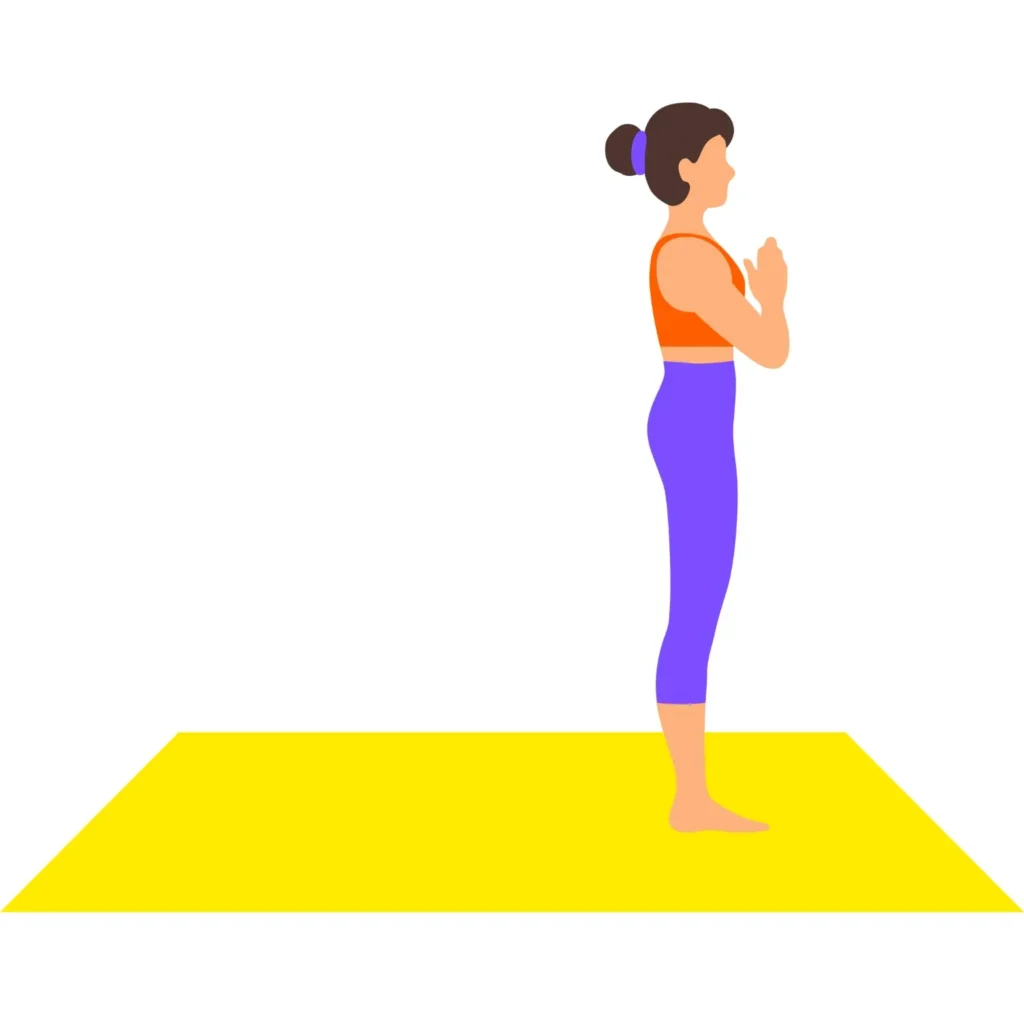
Why Tadasana?
- Grounding: It helps in grounding your energy and establishing a sense of calmness.
- Awareness: It increases body awareness and aligns your posture.
- Strength: Strengthens your thighs, knees, and ankles while improving your overall posture.
How to Do It:
- Stand with your feet together, pressing down evenly through your soles.
- Engage your thigh muscles, drawing them up.
- Lengthen your spine, reaching the crown of your head towards the sky.
- Place your arms at your sides, palms facing forward, radiating energy from your fingertips.
- Breathe deeply and hold the position, feeling the strength and stability of your body.
Embrace the simplicity and power of Tadasana as the starting point of your yoga practice, setting the stage for more complex poses.
2. Downward-Facing Dog (Adho Mukha Svanasana)
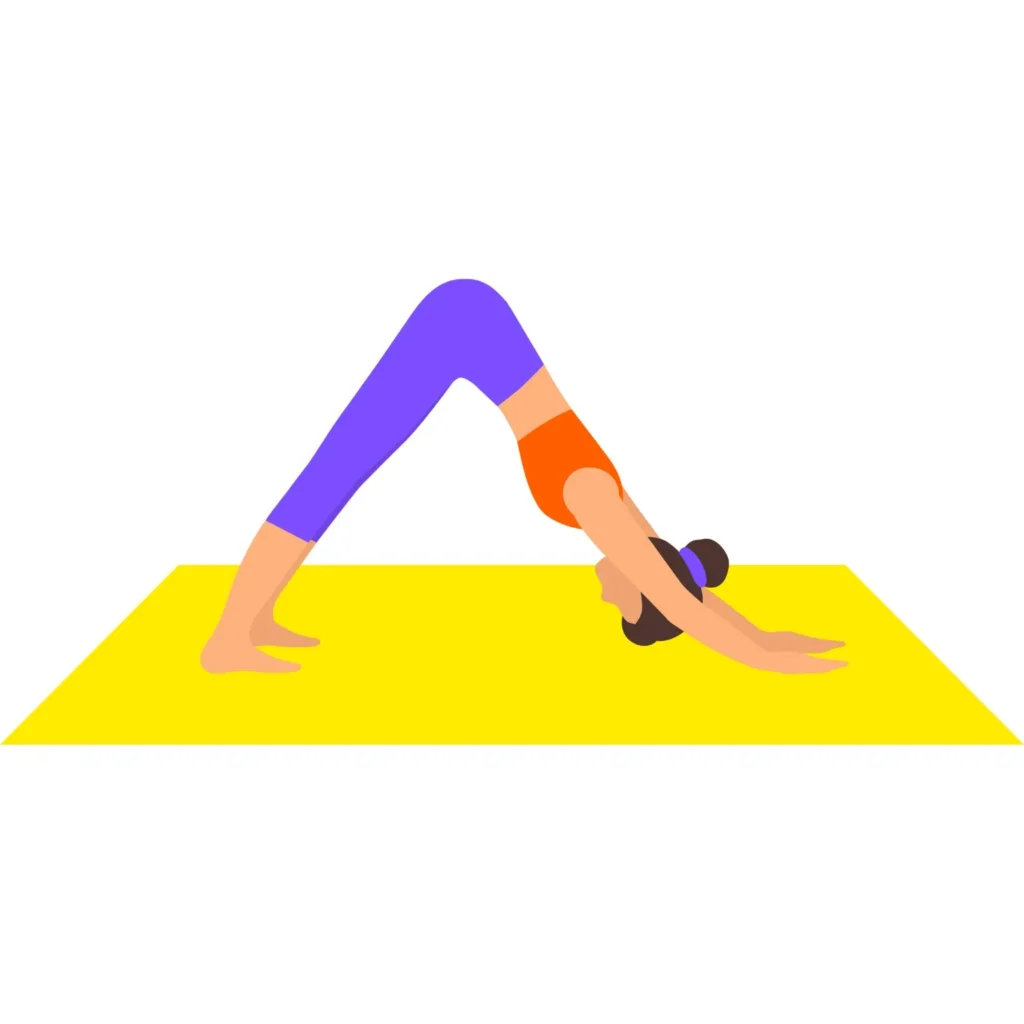
Why Practice Downward-Facing Dog?
- Versatility: A staple in many yoga sequences, it stretches and strengthens multiple parts of the body in one go.
- Rejuvenation: Helps relieve stress by stretching the spine and neck, promoting blood circulation to the brain.
How to Do It:
- Start on your hands and knees, with wrists directly under your shoulders and knees under your hips.
- Press into your hands, tuck your toes, lift your knees off the floor, and raise your hips toward the ceiling.
- Straighten your legs as much as you can, pressing your heels gently toward the floor.
- Keep your head between your arms, and gaze toward your feet.
- Hold the pose, breathing deeply for a few breaths.
3. Warrior II (Virabhadrasana II)
Why Practice Warrior II?
- Strength Building: Enhances stability and strength in the legs and arms.
- Focus and Balance: Improves concentration and balance, fostering a sense of inner strength.
How to Do It:
- Stand with feet wide apart, turning your right foot out 90 degrees and keeping the left foot in slightly.
- Extend your arms parallel to the floor, palms down, while bending your right knee until it’s directly over your right ankle.
- Gaze out over your right hand, keeping your torso perpendicular to the floor.
- Keep your shoulders relaxed and your torso aligned with the hips.
- Hold the pose, breathing deeply, then switch sides.
4. Tree Pose (Vrksasana)
Why Practice Tree Pose?
- Balance and Focus: Improves balance and concentration, encouraging a meditative focus.
- Alignment: Promotes good posture and body alignment.
How to Do It:
- Stand in Tadasana. Shift your weight slightly onto your left foot, keeping your inner foot firm to the ground.
- Bend your right knee, and place your right foot on your left inner thigh, calf, or ankle, with your toes pointing downward.
- Press your hands together in prayer position at your chest, or raise them above your head for more of a challenge.
- Focus your gaze on a fixed point in front of you to help maintain balance.
- Hold for several breaths, then switch sides.
5. Seated Forward Bend (Paschimottanasana)
Why Practice Seated Forward Bend?
- Calming: Soothes the mind and relieves stress.
- Flexibility: Stretches the spine, shoulders, and hamstrings.
How to Do It:
- Sit on the floor with legs stretched out in front of you. Keep the spine erect.
- Inhale and raise your arms over your head, stretching upward.
- Exhale and bend forward from the hip joints, chin moving toward the toes.
- Place your hands on your legs, wherever they reach comfortably.
- With each exhale, deepen the stretch, but don’t strain.
- Hold for several breaths, then release the pose.
6. Cobra Pose (Bhujangasana)
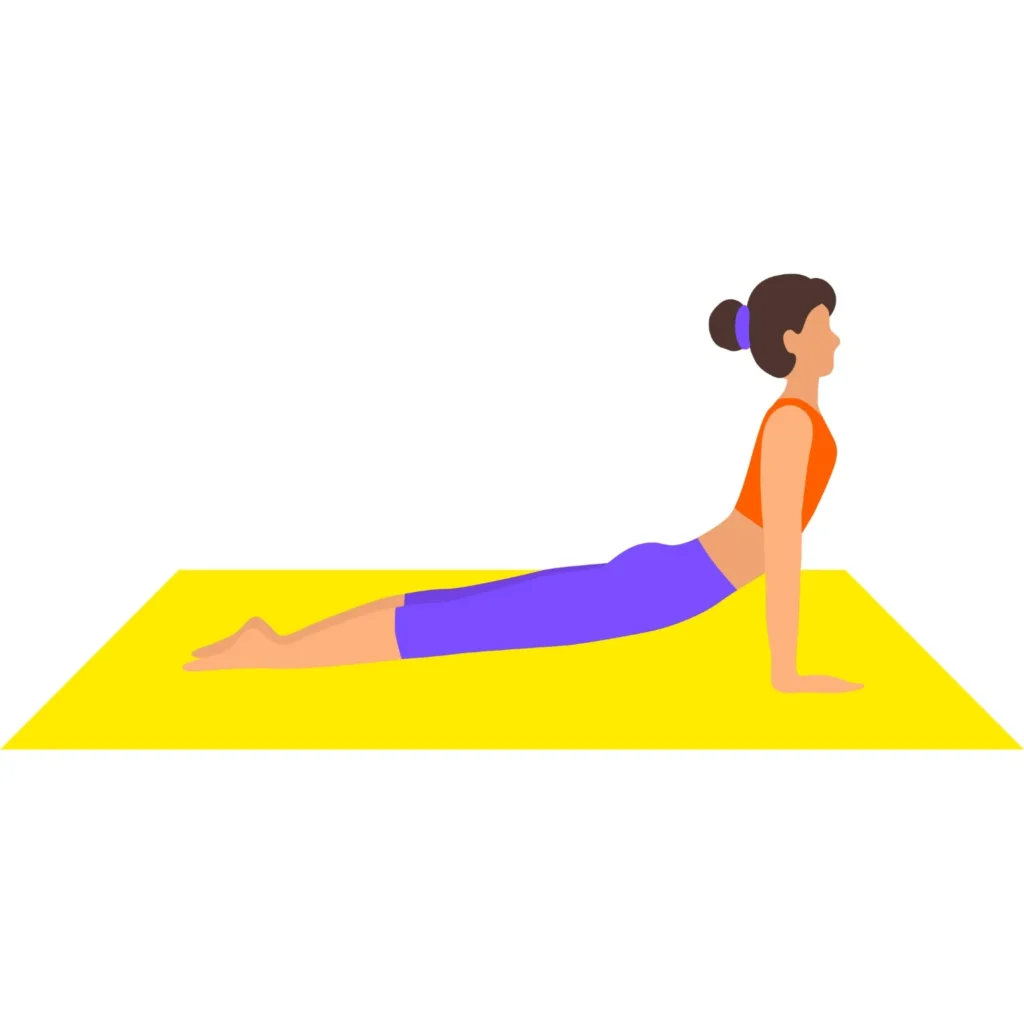
Why Practice Cobra Pose?
- Back Strengthening: Strengthens the spine and shoulders.
- Chest Opening: Opens the chest and lungs, encouraging deeper breaths.
How to Do It:
- Lie on your stomach with your toes flat on the floor and forehead resting on the ground.
- Place your hands under your shoulders, elbows close to your body.
- Inhale and slowly lift your head, chest, and abdomen while keeping your navel on the floor.
- Pull your torso back and off the floor with the support of your hands.
- Keep your shoulders relaxed and away from your ears
- Hold for a few breaths, then gently release back to the floor.
These poses form a solid foundation for any beginner’s yoga practice, offering a balance of strength, flexibility, and mindfulness. As with any new physical activity, listen to your body’s signals, and move into and out of each pose with care and awareness.
Essential Tips for Practicing Yoga at Home
Creating a successful home yoga practice is all about setting yourself up for success. Here are some tips to keep in mind:
- Designate a Space: Choose a quiet, comfortable spot where you won’t be disturbed. It doesn’t have to be large, but it should feel peaceful.
- Gather Your Tools: While yoga requires minimal equipment, having a good mat, and perhaps a few props like blocks or a strap, can enhance your practice.
- Set a Routine: Consistency is key. Try to practice at the same time each day to establish a routine that becomes a natural part of your daily life.
- Listen to Your Body: One of the greatest benefits of practicing at home is the ability to tune into your body’s needs. If something hurts, stop and adjust.
- Stay Inspired: Use online resources, books, or yoga apps to find new poses, sequences, and inspiration to keep your practice fresh and engaging.
Enhancing Your Yoga Practice with Simple Additions
Elevate your yoga practice with these simple yet effective additions:
- Breathwork (Pranayama): Incorporate breathing exercises into your routine to improve focus, relaxation, and lung capacity.
- Meditation: Ending your practice with a few minutes of meditation can enhance the calming effects of yoga, fostering mental clarity and peace.
- Mindful Movement: Move with intention and mindfulness, focusing on the sensations in your body and the breath in each pose.
- Yoga Nidra: Explore the practice of yoga nidra, a form of guided meditation done in savasana (corpse pose), for deep relaxation and stress relief.
- Journaling: Consider keeping a yoga journal to reflect on your practice, document your progress, and jot down any insights that arise.
Incorporating these elements into your home practice can deepen the yoga experience, offering greater benefits for both body and mind. As you continue to explore and grow in your yoga journey, remember that each practice is an opportunity to learn more about yourself and the incredible capabilities of your body.
Here are five more essential yoga poses that are perfect for beginners. These poses are foundational, offering a balance of strength, flexibility, and mindfulness to kickstart anyone’s yoga practice.
Building Your Yoga Routine Beyond Mountain Pose
Now that you’re familiar with Mountain Pose (Tadasana) and other foundational poses, you’re well on your way to creating a diverse and enriching yoga routine. Here’s how to continue building your practice:
- Mix and Match: Combine the poses we’ve discussed into sequences that feel good for your body. Start with a warm-up, move into standing poses, then seated poses, and finally, a relaxation pose like Corpse Pose (Savasana).
- Gradual Progression: As you grow more comfortable, challenge yourself with poses that require more strength, balance, or flexibility. Yoga is a journey, not a destination, so enjoy the process of learning and growing.
- Set Goals: Maybe you want to achieve a particular pose or incorporate more mindfulness into your day. Setting small, achievable goals can keep you motivated and focused.
- Routine Is Key: Try to practice at the same time each day. This consistency helps yoga become a natural and rewarding part of your daily life.
Community and Support: You’re Not Alone
One of the most beautiful aspects of yoga is the global community that shares this practice. Here’s how you can connect:
- Join Online Forums and Social Media Groups: There are countless online platforms where yogis from around the world share advice, experiences, and encouragement.
- Attend Workshops or Classes: If possible, attending workshops or classes can introduce you to new friends and mentors.
- Share Your Journey: Don’t hesitate to share your progress, challenges, and insights with others, whether online or in person. You might inspire someone to start their own yoga journey! Let’s be friends on Instagram and share your amazing journey!
Conclusion: The Start of Something Beautiful
Embarking on a yoga practice is the beginning of a profound journey of discovery. Through each pose, breath, and moment of stillness, you’re not just enhancing your physical well-being; you’re also nurturing your mind and spirit. Remember, the beauty of yoga lies not in perfecting the poses but in how it makes you feel: connected, balanced, and alive.
Share Your Experience!
We’d love to hear from you! Whether you’re a seasoned yogi or just unrolled your mat for the first time, your story can inspire and uplift others. Share your experiences, challenges, and triumphs in the comments below. What poses do you love? How has yoga impacted your life? Let’s create a vibrant, supportive space where we can all grow together.
Let’s explore the yoga deeper and visit other blogs that you’re interested in:
- 10 Amazing Yoga Exercises for The Eyes That Can Sharpen Your Vision
- Why Eco-Friendly Yoga? Practices and Products for a Sustainable Lifestyle You Need Now
- 5 Critical Reasons Why Children Need to Learn Yoga and Meditate
Go to home page for other amazing content to enlighten you about yoga, mindfulness and meditation.

